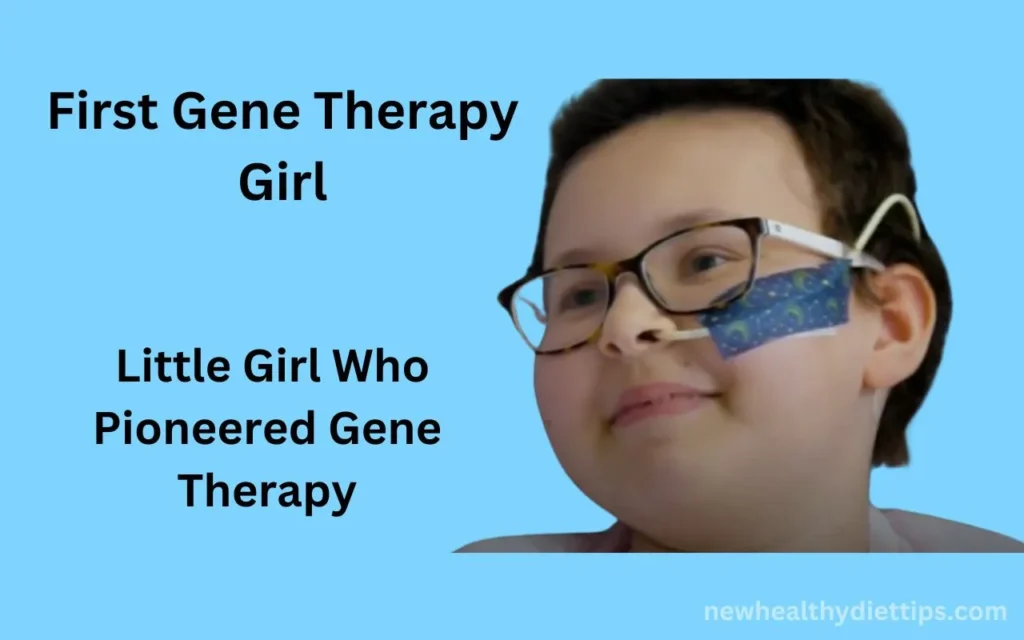Famous actor John Travolta starred in the 1976 television film The Boy in the Plastic Bubble, about a young man with a damaged immune system. The film’s premise is that Travolta’s character must choose between living in a bubble or dying in the world. The 2001 film Bubble Boy starred Jake Gyllenhaal.
The movie business makes these tales sound epic, but they’re genuine. The characters’ poor health resembles severe combined immunological insufficiency. In recent decades, clinical gene therapy experiments spearheaded by young girl Ashanthi DeSilva have advanced medicines for this and other disorders.
The first gene therapy girl Ashanti DeSilva was one of two participants in the first gene therapy study on September 14, 1990. The trial’s experimental methodology and interpretation have been criticized, but it proved gene therapy is possible.
Why Gene Therapy?: First Gene Therapy Girl
Are you searching for the first gene therapy girl? Though screening and transplantation technologies have improved and SCID treatment deaths have decreased, bone marrow transplants’ dependence on matched donors and still high risks remain essential negatives. Gene therapy was offered to solve these issues. Transfecting the patient’s cells with the missing gene prevents graft vs host illness. The selection advantage of transfected hematopoietic progenitor cells should result in a stable and robust immune cell population.
The First Trial
Ashanti DeSilva’s first gene therapy girl, born in 1986, was diagnosed with SCID at 26 months old following a constant series of infections. She had ADA deficiency, a rarer and less severe form of SCID than David Vetter’s X-linked SCID version. In 1985, W. French Anderson, M.D. and R. Michael Blaese, M.D. began developing retroviral gene therapy for ADA-SCID.
In July and September 1990, the NIH’s Recombinant DNA Advisory Committee and FDA authorized their LNL6 retroviral vector method for isolating and transfecting T cells. This treatment was initially given to four-year-old Ashanti DeSilva who is the first gene therapy girl. Four months later, nine-year-old Cynthia Cutshall followed.
As a safety precaution, weekly ADA injections may have contributed to the gene therapy’s brief success. Before forming a stable population, the few transfected T cells died without selective advantage. The patients had no adverse effects and grew up normally. Though not a cure, the trial was successful. Following this milestone, gene therapy research has grown rapidly. Even though X-SCID gene therapy caused leukemia and Wiskott–Aldrich syndrome gene therapy killed some patients, numerous other trials have succeeded and led to treatments for previously incurable diseases.
Are you looking for Healthy diet tips?
— newhealthydiettips (@newhealthy96941) October 31, 2023
New Healthy Diet Tips is here to mix and stay aware of you reliably. Plan to track down a tremendous area of extraordinary, nutritious, and dazzling possible results. click here to know more- https://t.co/WKhgao1wsu pic.twitter.com/j7ngoQGHl5
How Gene Therapy Works
You may know how gene therapy works when you are looking for a first gene therapy girl. In gene therapy, PI patients’ hematopoietic stem cells are collected, the PI-causing gene variant is corrected, a functional copy of the gene is introduced into the stem cells, and the modified stem cells are given back to the patient via intravenous infusion.
Stem cells are extracted from the patient’s bone marrow, peripheral blood, or umbilical cord blood, just like from an HSCT donor. Growth factors are added to the cells to induce growth and division in the lab for a few days. Cells are changed to introduce a functional copy of the gene of interest or directly modify the PI-causing gene variation.
A viral vector is used to deliver a functional gene to grown cells. Modified viral vectors are “shells” with human genes instead of virus genes. These viral vectors persist in inserting genetic material into human cells but cannot infect. Most gene therapies use AAV, adenovirus, or lentivirus vectors.
Read carefully to know the first gene therapy girl, The functional gene is injected into cultivated stem cells by mixing the viral vector. Lentiviral vectors integrate genes into stem cells’ chromosomes, while AAV or adenoviral vectors leave genes as episomes. The functioning gene is permanently incorporated into the stem cell’s genetic material and passed on to all subsequent blood cells.
Instead of injecting a functional gene into grown stem cells, the viral vector distributes CRISPR/Cas system protein, RNA, and DNA to correct PI-causing gene variations directly. The gene editing system corrects the PI-causing genetic variation in each stem cell’s DNA to make the gene functional. Adding a functional gene copy will make the repair permanent in all stem cell-made blood cells.
Currently, all FDA-approved gene treatments for non-PI illnesses add a functional copy of a gene of interest to cells rather than modifying gene variations. Gene editing therapy is under clinical trials for various illnesses, including complement deficiency hereditary angioedema (HAE).
Have you heard about the first gene therapy girl who applied the therapy? The customized stem cells might be administered directly to the patient or frozen and given later.
Conditioning with chemotherapy or immunosuppressants may precede the infusion of corrected hematopoietic stem cells. This may be needed to give corrected hematopoietic stem cells enough bone marrow area to grow and divide. Gene therapy usually requires less chemotherapy than unrelated donor HSCT.
After conditioning, the corrected hematopoietic stem cells are returned to the patient via IV infusion. In two to three months, corrected hematopoietic stem cells circulate throughout the body, creating a healthy immune system with functional T cells. Like HSCT patients, gene therapy patients are monitored for problems and cell function.
Conclusion
So now you know about the first gene therapy girl. The growing experience with gene therapy has shown that introducing a functioning gene into stem cells can treat PI. Gene therapy may treat many severe PIs in the future.
Our Services include the best healthy eating habits, nutrition guides, diet, nutrition plans and newsdailytime.
FAQs
Who’s Ashanti DeSilva?
Ashanti DeSilva, born in 1986, was diagnosed with SCID at 26 months old following a constant series of infections. She had ADA deficiency, a rarer and less severe form of SCID than David Vetter’s X-linked SCID version.
What happens to Ashanti DeSilva?
DeSilva began pegylated ADA (PEG-ADA), an enzyme therapy developed in the 1980s, like other youngsters with the disease. The medication helped her gain weight, normalize her peripheral T-cell level, and reduce infections. Her immune insufficiency continued.
Where is Ashanti DeSilva from?
The successful treatment of a Bethsaida, Maryland, four-year-old child on Sept. 14, 1990, launched gene therapy. Ashanthi Desilva was born lacking the ADA gene needed for immunological function.
What is bubble boy disease?
Every year, 50–100 U.S. children are born with severe combined immunodeficiency (SCID), a rare genetic condition. The 1976 film “The Boy in the Plastic Bubble” popularized SCID as “bubble boy disease.”
Read More: Super Health Male Enhancement Gummies.

